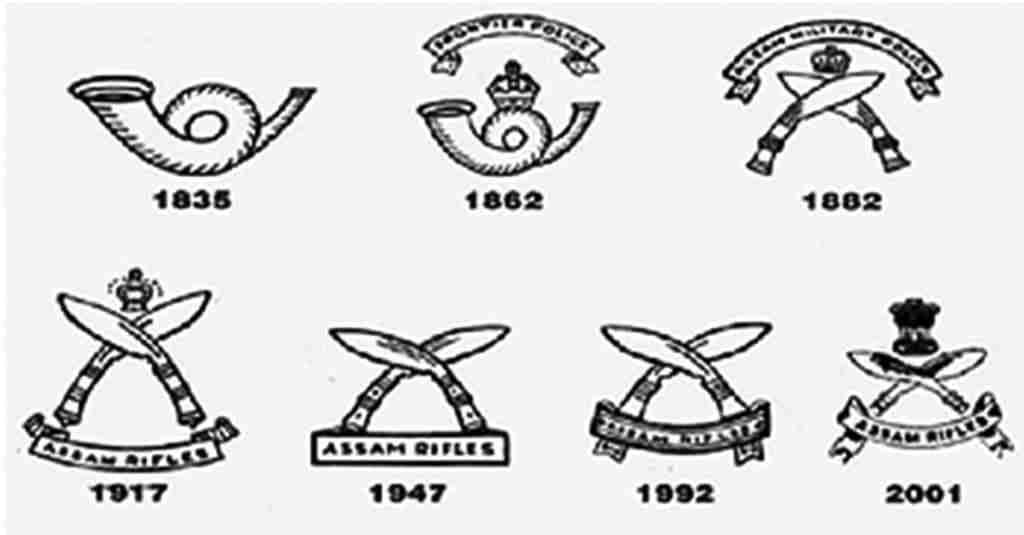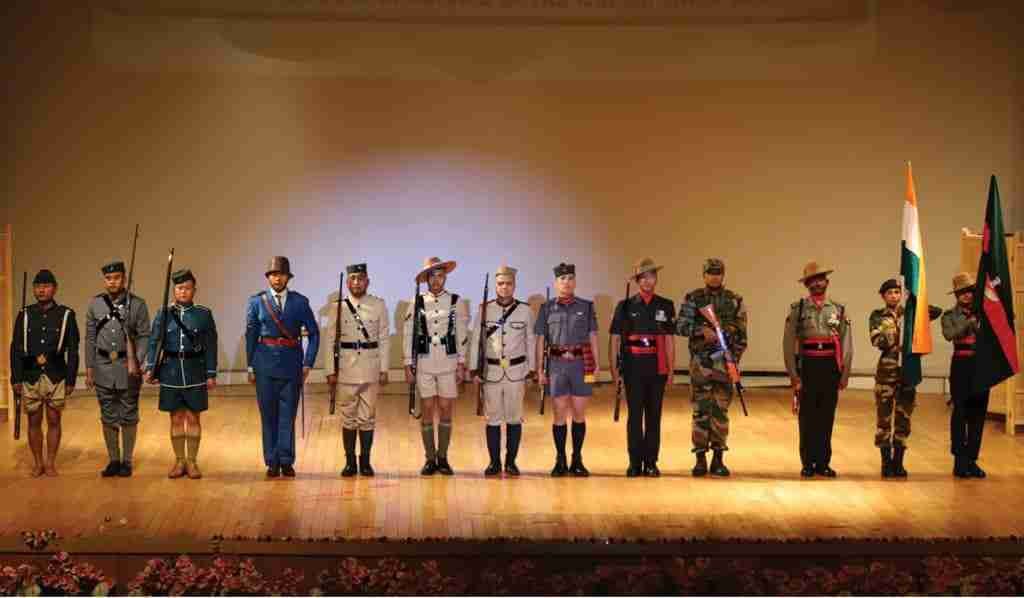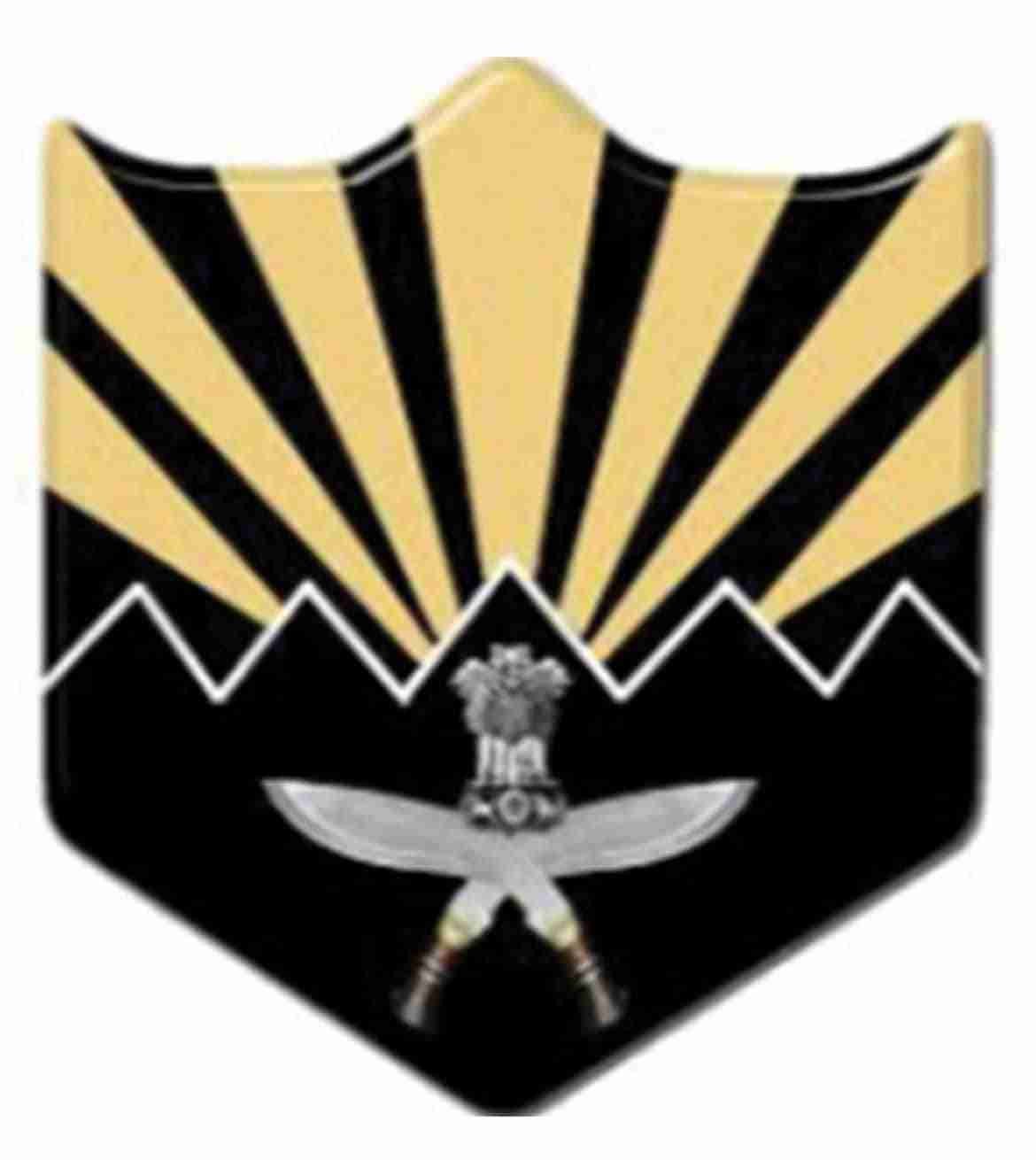It was the requirement of the British of guarding the tea estates in the alluvial plains of Assam from the wild and unruly tribes inhabiting the surrounding hill tracts, that led to their raising of the Cachar Levy in 1835. What began then as a poorly armed force of 750, headed by a civilian officer, underwent different designations/names over the next decades.
From Assam Frontier Police’ in 1883, Assam Military Police’ in 1891, when it rose up to three battalions and officered by British Army officers, it became ‘Eastern Bengal and Assam Military Police’ in 1913 and by 1917, in recognition of its contribution during World War I in Europe and Middle East, where it participated with 23 Officers and 3174 other ranks as part of the Gurkha Brigade, it got named ‘Assam Rifles’. Having grown to five battalons, by World War II, the force functioned as elements of the famous, ghost-like ‘V’ Force, on reconnaissance and harassment missions behind Japanese lines in Burma (now Myanmar).
Assam Rifles over the years
By the end of WW II, Assam Rifles had established its reputation as not only India’s first para-military force but one to reckon with not only as a police force, but one which excelled in jungle and mountain warfare. Its tally of gallantry awards in both the world wars was: Military Cross-2, Commander of the Order of the British Empire-1, Order of the British Empire-6 and Mention in Despatches-4.
With India’s Independence in 1947, came many changes including the appointment of a full-fledged Inspector General of Assam Rifles to head the Force. In 1950, the disposition of the Force was : 1 Assam Rifles in Lushai Hills, 2 and 5 Assam Rifles on the Northern Border facing Tibet (China), 3 Assam Rifles deployed to take care of the Naga Areas, both in the state of Assam and in erstwhile North East Frontier Agency (NEFA) and 4 Assam Rifles in Manipur. At this time the old Tripura Rifles was being reorganised as 6 Assam Rifles.
In October 1950, the occupation of Tibet by China led to the exposure of the Northern Frontier to a potential Chinese threat. Therefore, in December 1950, a high powered committee under the chairmanship of Maj Gen Himmat Sinh, the then Deputy Defence Minister with Maj General Kulwant Singh, the Chief of General Staff was set up to examine the defence of India’s Northern and North Eastern borders from Sikkim through NEFA, and from Assam to the Burma border.
With India’s Independence in 1947, came many changes including the appointment of a full-fledged Inspector General of Assam Rifles to head the Force.
Considering the broader aspect of roles of the Assam Rifles, its place in Assam’s administration, its force level and internal communication, the Committee stipulated that the Assam Rifles would be the most suitable paramilitary agency to take on the commitment in the North East.
Based on the recommendation of the Defence Committee, in addition to 6 Assam Rifles, which was already in the process of being raised out of the erstwhile Tripura Rifles, 7 Assam Rifles was raised in October 1952 followed by the raising of 8 Assam Rifles in September 1955. In the meantime, the rank of Inspector General Assam Rifles was upgraded to Brigadier in 1949 and in 1955 Headquarters 1 Sector, later called Manipur Range Assam Rifles and now Headquarter 9 Sector, was raised under the command of Deputy Inspector General, Col AS Bedi.
Thus, Headquarters Nagaland Range (South) (present Headquarter 5 Sector) was raised in April 1959 followed by Mizoram Range (present Headquarter 23 Sector) in September 1960 and Nagaland Range (North) (the present Headquarter 7 Sector) in July 1963. In 1961, a formation sign for the Assam Rifles was introduced. The crest of the Ashoka Lions on top of crossed Khukris over a scroll topped by rays of the rising sun is significant and eye-catching.
Spirited warriors
During 1962 India – China War, the Assam Rifles fought bravely, combating and delaying the Chinese advance till the Indian Army could reach their battle locations. After the 1962 India-China War, the Force was further expanded. In 1965 – 66, 18 and 19 Assam Rifles were raised. On 1 August 1965, the administration of NEFA was transferred from the Ministry of External Affairs to the Ministry of Home Affairs. During the 1965 India – Pakistan war, the Assam Rifles filled the void in Nagaland and Manipur created by the Army units which moved for operations in the West. During the 1971 India – Pakistan war, Assam Rifles was deployed for internal security duties in Nagaland, Manipur, Mizoram and Tripura.
In 1966, there was a sudden outbreak of insurgency in Mizoram, which which necessitated the raising of two more battalions; so 20 and 21 Assam Rifles were raised in 1968.
Also in 1968, all units of the Force were equipped with a new family of small arms i.e. 7.62 mm self loading rifles, 7.62 mm light machine guns and 9 mm sten guns. The old WW II vintage radio sets were discarded, and better ones made indigenously were introduced.

By early 1971, the Key Location Plans of all units started getting finalized. In October 1972, the Inspector General Assam Rifles was appointed as the ex-officio security advisor to the North East Council. This appointment continued to be held by the later Director Generals of Assam Rifles till 2013.
Operation (Op) Pawan in Sri Lanka saw active deployment of three Assam Rifles Battalions while eight battalions participated in Op Rakshak in the Kashmir Valley from 1990 to 1998.
In June 2010 the first contingent of the Assam Rifles Formed Police Unit (ARFPU) was deployed in Haiti as part of United Nations Mission called MINUSTAH. Over the years, Assam Rifles contingents rendered yeoman service under the UN banner. In July 2019, the 9th Contingent of Assam Rifles returned to India post closure of UN Mission in Haiti. Having performed exceedingly well it was aptly bestowed with the “Appreciation and Congratulation Certificate” from the UN HQ.

With vast experience in various forms of operations in areas ranging from not only the entire North Eastern region, including Sikkim, to erstwhile Burma, France, Middle East, Sri Lanka and Haiti. During its deployment in Jammu and Kashmir, its personnel succeeded in instilling fear in Pakistani and Pakistan-supported terrorists.
Currently, Assam Rifles, with 46 battalions, is deployed in North-Eastern States where it is performing the dual roles of guarding the Indo-Myanmar Border (IMB), as also of fighting Counter Insurgency/counter terrorist operations in the region. 19 of the 46 battalions are presently performing the duties of border guarding and in furthering the Government’s objective of strengthening the IMB, additional 28 Company Operating Bases are being shifted within 6 kms of IMB, which will eventually result in 23 battalions of Assam Rifles performing the border guarding role by December 2020.
Nation building
In addition to playing a pivotal role in effective border management and combating insurgency, the contribution of Assam Rifles to nation building as part of aid to civil authorities and civic actions has been remarkable. The Force has effectively implemented the Civic Action and Border Area Development programmes (BADPs) in the remote and isolated areas of the North Eastern States.
Assam Rifles is also playing a key role to nurture the passion and enthusiasm of North Eastern people towards sports. Recently, the Force conducted the first ever North Eastern States Girls (under 19) Football Tournament to identify the talented players. Assam Rifles has the proud privilege of affiliating with the Mary Kom Regional Boxing Foundation in Manipur. India’s leading woman boxer M.C. Marykom has agreed to guide and motivate the Assam Rifles Boxing team. Recently, the Force selected 158 candidates from various sports categories for employment under its sportspersons’ quota.
In addition to playing a pivotal role in effective border management and combating insurgency, the contribution of the regiment in nation building as part of aid to civil authorities and civic actions has been remarkable.
Assam Rifles is ensuring that all necessary measures are implemented for Women’s Empowerment in the Force. Republic Day Parade 2019 witnessed a full-fledged Mahila (women’s) Contingent of Assam Rifles, turned out and marching no less smartly than their male counterparts on Rajpath for the first time. Assam Rifles’ Riflewomen also participated in the all-women team in a patrol conducted along the Line of Actual Control (LAC) in Arunachal Pradesh. The team comprising 18 women personnel of Indian Army, Assam Rifles and Indo Tibetan Border Police etched a name for themselves in the annals of military history by becoming the first all-women team to accomplish adventure cum operational patrolling in the Himalayas.
Hailed as ‘Sentinels of the North East’ and ‘Friends of the North East People’, Assam Rifles is inextricably linked with the development of the North East. An iconic painting presented to Assam Rifles by the Government of Burma and the Tea Planters Association depicts an Assam Rifles Rifleman holding a child and escorting her mother during the 1942 exodus of Indian refugees following Japanese forces attacking Burma. Over the decades since Independence, every year Assam Rifles accompanies the Indian Army in flood relief operations in Manipur and parts of Assam.
1169 personnel of this regiment laid down their lives in various post- Independence wars and other operations and the tally of gallantry awards in this period is: 04 Ashok Chakra, 33 Kirti Chakra, 145 Shaurya Chakra, 48 Unit Citations (military awards for operations not in war), 19 President’s Police Medal (G-gallantry), 87 Police Medal, 11 President’s Police Medal (DS-distinguished service) and 07 Prime Minister’s Life Saving Medal (civilian/police awards).
During World War II, when it was decided to raise the Assam Regiment, it was a replication of the Assam Rifles and the only battalion raised and pitched into the War, performed brilliantly.


